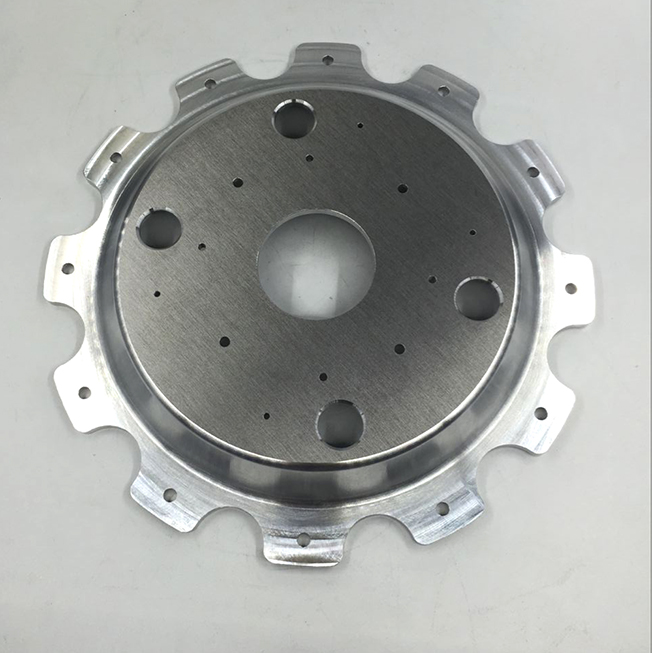The emergence of CNC machine tools is a manifestation of a great progress in the industry. It can better solve the problems of messy, fine, small batch, and changeable parts processing. It is a sensitive and efficient automatic machine tool. When programmers use CNC machine tools for processing, they must first analyze the process. According to the information, generalized shape,
Machining accuracy, etc. of the workpiece to be processed, a suitable machine tool is selected, the processing plan is drawn up, the processing sequence of the parts is confirmed, the tools used in each process, the fixture and the cutting amount, etc.
1. Reasonable selection of machine tools
When
Machining Parts on a CNC machine tool, there are generally two situations.
The first situation: there is a part pattern and a blank, and a CNC machine tool suitable for processing the part must be selected.
The second situation: there is already a CNC machine tool, and it is necessary to select parts suitable for processing on the machine tool.
Regardless of the situation, the main factors to consider are the information and type of the blank, the degree of disorder in the generalized shape of the part, the size of the scale, the processing accuracy, the number of parts, and the heat treatment requirements. In summary, there are three points:

① It is necessary to ensure the skill requirements for processing parts and process qualified products.
② Conducive to improving the production rate.
③ Reduce production costs (processing costs) as much as possible.
2. Analysis of the technology of
CNC Machining Parts The technical analysis of
CNC Machining involves a wide range of areas, so we only analyze it from the two aspects of the possibility and convenience of CNC machining.
(1) The scale data on the part drawing should conform to the principle of programming convenience
1. The dimension indication method on the part drawing should be used to the characteristics of CNC machining. On the part drawing of CNC machining, the scale should be quoted with the same datum or the coordinate scale should be given directly. This marking method not only facilitates programming, but also facilitates the coordination between standards, and brings great convenience in adhering to the consistency of design benchmarks, process benchmarks, inspection benchmarks and programming origin settings. Because part designers generally consider assembly and other use characteristics in scale labeling, they have to choose partial labeling methods, which will bring a lot of inconvenience to process organization and CNC machining. Because CNC machining accuracy and repeat positioning accuracy are very high, the use characteristics will not be damaged due to large accumulation errors, so part of the scattered labeling method can be changed to the same reference citation scale or the labeling method that directly gives the coordinate scale. .
2. The conditions of the several elements that constitute the part induction should be sufficient
The base point or node coordinates should be calculated during manual programming. During active programming, all the genomic elements that constitute a part should be defined. Therefore, when analyzing the part drawing, it is necessary to analyze whether the given conditions of the few elements are sufficient. For example, the arc and the straight line, the arc and the arc are tangent on the drawing, but according to the scale given on the drawing, when the tangency condition is calculated, it becomes the state of intersection or separation. Because of the insufficient conditions of the constituent elements, it is impossible to start programming. When encountering this situation, it should be resolved through consultation with the part designer.
(2) The structure and craftsmanship of each processing part of the part should conform to the characteristics of CNC machining
1) It is best to select the same geometry type and size for the cavity and shape of the parts. This can reduce the tool specifications and the number of tool changes, facilitate programming, and improve production efficiency.
2) The fillet size of the inner groove determines the size of the tool diameter, so the fillet radius of the inner groove should not be too small. The processability of the parts is related to the height of the processed summation, the size of the transfer arc radius, and so on.
3) When the part is milling the bottom plane, the groove bottom fillet radius r should not be too large.
4) Consistent reference positioning should be used. In CNC machining, if there is no consistent reference positioning, the re-installation of the workpiece will cause the inconsistency in the orientation and scale of the two faces after machining. Therefore, in order to avoid the occurrence of the above-mentioned problems and ensure the accuracy of the relative orientation after the two clamping processes, a consistent reference positioning should be selected.
It is best to have suitable holes on the parts as the positioning reference holes. If not, set the process holes as the positioning reference holes (such as adding process lugs on the blank or setting process holes on the margin to be milled in the subsequent process). If the process hole cannot be made, at least the finished appearance should be used as a consistent benchmark to reduce the errors caused by the two clamping. In addition, it should also analyze whether the required machining accuracy and dimensional tolerances of the parts can be ensured, whether there are redundant dimensions that cause contradictions, or closed dimensions that affect the process organization.



